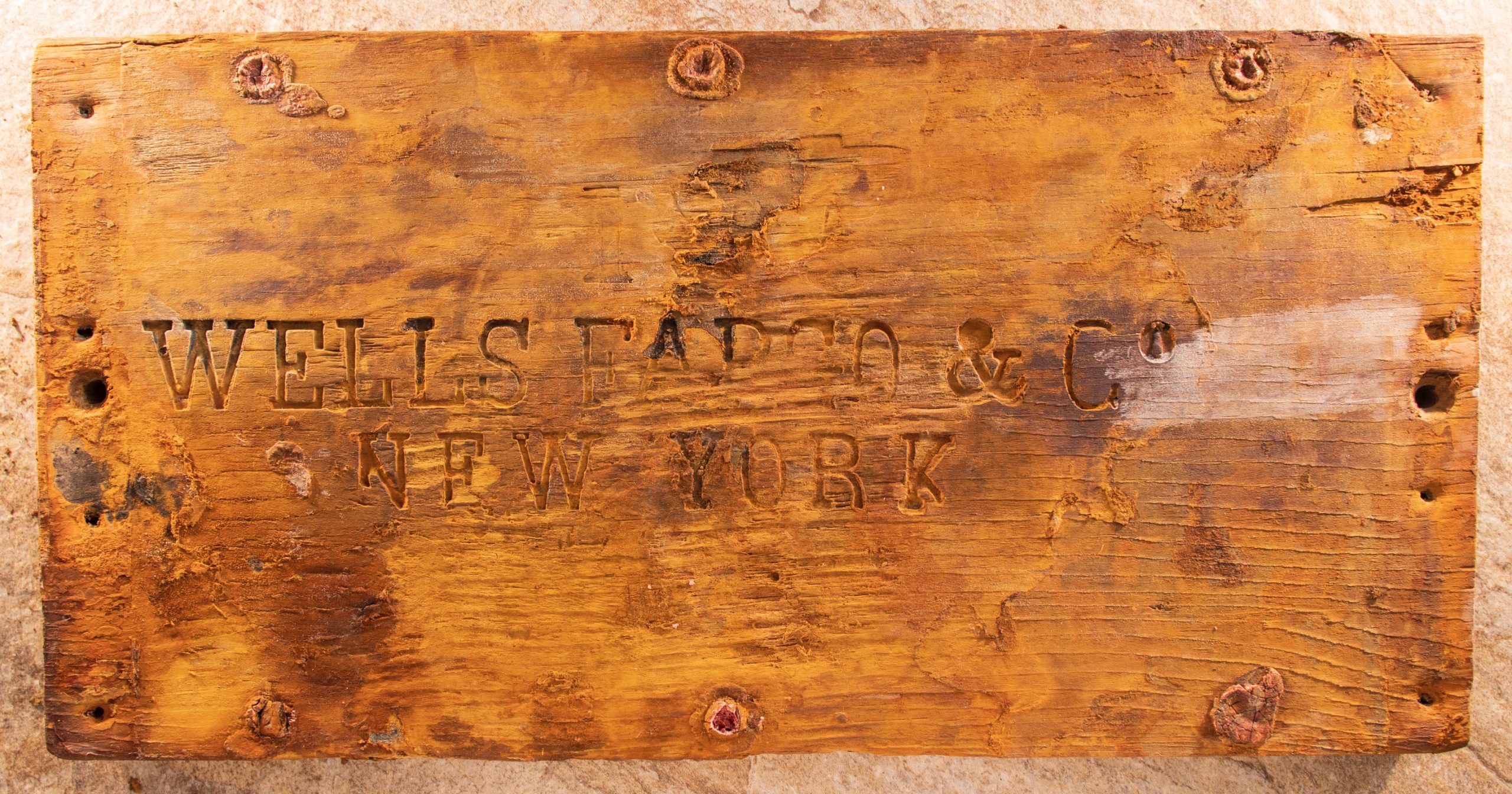Unique New Jersey $3 Banknote, Keys To Fabled Ship’s Treasure Room, and Polhemus Counter-Stamped Double Eagle Also Set Records In Holabird Western Americana Collections Auction
A unique wooden lid to a Wells Fargo & Co. treasure box was one of the many California Gold Rush sunken treasure highlights recovered from the fabled “Ship of Gold,” the S.S. Central America that sank in 1857, in the Holabird Western Americana Collections (www.HoladbirdAmericana.com) auction held December 3, 2022 in Reno, Nevada and online. The lid with the engraved name “Wells Fargo & Co./New York” boldly visible sold for $99,600.
Another never-before-offered numismatic item recovered from the legendary ship were Purser Edward W. Hull’s keys to the ship’s treasure cargo storage room. The keys attached to a personalized brass name tag sold for $102,300.
“There has never been anything like the scope of these recovered artifacts which represented a time capsule of daily life during the Gold Rush. The auction took over eight hours for only 270 lots because of the exceptionally large number of bids,” said Fred Holabird, president of Holabird Western Americana Collections.
Holabird advised there will be just one final opportunity to acquire previously unavailable S.S. Central America artifacts when the last items recovered from the fabled ship are offered in a public auction on February 25, 2023.
“There were five recovered banknotes in the auction. They were among 11 ‘broken bank’ notes found in the Purser’s safe that was retrieved from the seabed in 2014 after being submerged for 157 years about 7,200 feet below the surface of the Atlantic Ocean off North Carolina. The other recovered notes will be offered in in February auction,” explained Holabird.
One of the five banknotes in the December auction is a $3 denomination note issued by the State Bank of Newark, New Jersey. It is the only known example to have been in circulation, apparently used to purchase a ticket on the legendary ship at dockside the day the ship left New York on a voyage to Panama.
These are the winning bids on the five banknotes in the auction that the Purser accepted while assuming the issuing banks were alive and well at the time:
- Bank of Syracuse, New York, $5, Haxby G12c., $5,280.
- Exchange Bank, Bangor, Maine, $5, Haxby G8., $5,760.
- North River Bank, New York, $20, Haxby G50c., $1,380
- Peoples Bank $5, Charleston, South Carolina, Haxby G2a., $3,720.
- State Bank of Newark, New Jersey, $3, Haxby proof only, $5,160.
“Some of the notes undoubtedly were used by passengers to pay for their tickets. The money was accepted perhaps because the Purser did not yet know the banks that issued the paper money had failed,” explained Dwight Manley, Managing Partner of the California Gold Marketing Group which consigned the notes to the auction.
An 1856-S Double Eagle counter-stamped by Sacramento, California drug store owner J.L. Polhemus sold for $43,200. It is graded PCGS AU58 and encapsulated in a special PCGS holder with a pinch of recovered gold dust.
In addition to the lid from a Wells Fargo gold shipment box, a treasure shipment box from San Francisco Gold Rush-era bankers Sather & Church sold for $6,300. A cloth bag found in the Purser’s safe brought $4,300. It had the word “Dimes” written in black ink on it, although 2014 recovery mission records indicated it had held U.S. quarters and half-dollars.
A gold stickpin crafted with a U.S. Type II $1 gold coin of 1854-1856 sold for $5,040, and a sampling of nine unconserved pocket change coins gathered from the seafloor around the shipwreck site sold for $1,920.
Among the other lots in the auction were recovered exquisite Gold Rush jewelry, vintage 1850s clothing and other unique artifacts from the legendary ship. The oldest known pair of miner’s heavy-duty work pants sold for $114,000, the highest price ever paid for jeans. The auction catalog contained an extensive explanation of why the jeans may have been made by or for Levi Strauss Company.
“Seemingly ordinary items from the passengers and crew today give us extraordinary insight into the everyday lives of the people who traveled on the steamship,” said scientist Bob Evans who was on each of the recovery missions.
The tragedy of the S.S. Central America sinking took the lives of 425 of the ship’s 578 passengers and crewmembers, and the loss of the gold cargo was a major factor in the economically devastating financial Panic of 1857 in the United States.
Insurance claims for the loss were paid in the 1850s and the company that discovered and retrieved the treasure starting in 1988 settled with the insurers and their successors in 1992. With court approval, California Gold Marketing Group subsequently acquired clear title to all of that remaining treasure as well as all the items later recovered in 2014. For additional information about the recovered artifacts and the February 2023 auction, visit Holabird Western Americana Collections of Reno, Nevada at www.HolatbirdAmericana.com, call 775-851-1859, or email info@holabirdamericana.com.

